- Home
- Неизвестный
Where The Hell is Boulevard? Page 10
Where The Hell is Boulevard? Read online
Page 10
Monday, November 7
Department 6 of the Superior Court, 1:30 p.m.
The opening statements were efficient as expected and without overwhelming fanfare.
Kyra did a very competent and workman like job of laying out what the People would prove. She paced before the jury without notes and laid out the basis of the people’s case.
“Ladies and gentlemen, this is a case of murder, plain and simple.”
“The photographs I’m about to show you will be shocking.”
“First, here is a detailed drawing of the area in Boulevard, California where this horrendous crime took place.”
Smoothly, she transitioned, “This first photograph, ladies and gentlemen, shows the result of the vicious attack perpetrated by the defendant Eddie McDermott,” pointing to McDermott.
She paused to look across the two rows of jurors for their reactions as they passed the photograph of Javier Molina taken at the crime scene.
Eddie McDermott sat stoically looking forward.
“This brutal beating was carried out by the defendant along with two of ths friends. The evidence will show that Molina was jumped by McDermott and his two buddies who together inflicted a senseless beating on this unsuspecting young Hispanic male.”
“Eddie McDermott may be described to you by the defense as a troubled youth without malice in his soul, but I tell you he clearly had hate in his heart that day which directly lead to a horrible murder.” She paused. “Calculated and cold blooded.”
She emphasized to the jury, “The evidence will confirm to you that this horrendous beating to death of this young Mexican-American can only be described as a hate crime.”
Stopping and looking at the jury with focused eyes, “The defense may tell you that the victim was not the person his ID said he was, and that he was a mere undocumented alien, and that his body remained unclaimed–all to try to cause you to lessen the significance of his death. But, this man was still a human being, and the law requires that the perpetrators of his demise must be found guilty and punished for their actions.”
Kyra clearly kept the jury’s attention and, as Buck knew she would, obviously gained the jury’s recognition that she was a competent litigator.
Monday, November 7
Department 6 of the Superior Court, 3 p.m.
It was now Buck’s opportunity for an opening statement. Buck liked to start his opening statements with a blunt, attention getting message.
“Don’t assume!” Buck stated boldly. “Facts and circumstances are not always what they appear to be at first sight.”
This was his message and he delivered it forcefully but respectfully to the jury.
In his preferred short-but-sweet style, he urged the jury, “The facts, as they come into evidence, will clearly cause you to remember this opening admonition.”
Although he would remind them of this admonition as often as Judge Goodman would allow without telling him to “save it for final argument,” he now urged them to keep it in mind at every stage of the trial.
“There is no question this man’s life, no matter what his
citizenship, no matter what his ethnicity, was a valuable human life and someone, somewhere, will mourn his passing.
“This is a crime that must and will be addressed.”
He paused somewhat dramatically and then resumed, “The evidence, however, will show a minimal role by Eddie McDermott and, despite his inexcusable lack of judgment and downright stupidity, he is not the principal perpetrator of this crime.”
Buck was careful not to specifically promise too much. His most exculpatory theories of the defense had still not come to fruition but were racing along to hopefully generate the key evidence that would save Eddie from the worst case scenario he was facing.
There was nothing worse than for the trial lawyer to promise something specific and not deliver on it. A jury never forgets such failure, and any decent prosecutor will ram it down their opposition’s throat in front of the jury during closing argument.
Buck elected not to even suggest any of his still-evolving theories. He used his years of experience to acknowledge some aspects of the evidence against his client but to urge an open mind until all the facts are before them. That’s the promise he asked the jury for.
As his brief summary of the case ended, Buck concluded with the same forceful and blunt message he began with, “ Whatever you do, ladies and gentlemen of the jury, don’t assume!”
As Buck returned to his seat, Judge Goodman merely said, “Counsel and Ladies and Gentlemen of the Jury, considering the hour, we will be adjourning and will start at 9:30 sharp in the morning. You are admonished not to speak to anyone about the case and avoid any media references to the matter. If any problem develops in that regard, it could force me to sequester the jury. Believe me, that is something that neither you nor I want.”
Tuesday, November 8
Department 6 of the Superior Court, 9:30 a.m.
Kyra called as her first witness, Deputy Brent Dixon. She strategically walked Deputy Dixon through his and his partner’s call to the scene of the crime. She carefully avoided hearsay objections while establishing the time and layout of the crime scene. She introduced a drawing of Dante’s Tavern and its surroundings, including the picnic area and proximity to Anderson’s Country Store. It was clear that a talented evidence artist had put this together with key distances set out and a scale for later use should witnesses identify distances not already entered on the drawing.
“Deputy Dixon, can you confirm that this drawing, marked as People’s Exhibit #1, represents the scene you were called to on Thursday, September 20 of this year?”
Before she could ask her next question, Buck stood up and politely offered, “ Your Honor, the defense has no objection to the diagram and we will stipulate to its admission into evidence.”
“Thank you, Counsel,” Kyra responded and then proceeded with the questioning of Deputy Dixon including the details of the trek to Eddie’s home and his arrest.
Eddie’s mother was quietly weeping in the courtroom gallery. While it was not loud enough to interrupt the proceedings, the jury clearly saw the genuine heartache of the mother of a 17-year-old boy accused of murder.
Buck saw no reason to object to any of O’Neill’s leading of Deputy Dixon through his testimony. Deputy Dixon’s responses were surprisingly objective and accurate and aligned with everything Buck knew. Although the so-called leading question was objectionable in the trial, it often was overlooked in the laying out of preliminary and non-controversial material. Buck might tighten down considerably as the trial continued, depending on how it went or maybe how much trouble he thought his case was in.
Buck decided that no cross-examination of Deputy Dixon was necessary. To do so would merely give Kyra another opportunity to discuss the beating death of the victim. This judgment, often followed by seasoned defense attorneys, was simple. Why provide another opportunity to the prosecution to lay out, once again, the gory details of the crime?
Kyra O’Neill next called Dr. Rebecca Louden to the stand. Typical to lawyer’s presentations of their expert witnesses, Kyra began her presentation with questions allowing as long a dissertation as she could get away with as to Dr. Louden’s extensive qualifications and experience.
Buck immediately interrupted with a traditional ploy when a clearly qualified expert was being presented by his opponent. “Your Honor, the defense recognizes Dr. Louden’s credentials and would stipulate to her being qualified as an expert in this case.” This, of course, was meant to limit the amount of laying on to the jury how great and believable the expert should be.
Kyra did not miss a beat and cleverly responded, “Thank you, Counsel, for your offered stipulation but I ask the court to allow me to briefly continue as to Dr. Louden’s credentials.”
Buck knew the judge would allow Kyra’s request to continue. Thus the first, and clearly minor game, was over.
Buck had known from the beginni
ng that he did not intend to do much with Dr. Louden by way of cross-examination, rather he would save his principal questioning of her for his defense. Unless Dr. Louden made
some statement clearly contradictory to her office’s previous findings and report, Buck pretty much had to let her conclusions stand at this point. He did have a few areas he would go into in cross-examination, but he would save his best shot–if it developed–for his defense presentation of his case in chief. Buck actually wanted to lock her in as to her position and opinions. That was the key to his emerging strategy.
Following Dr. Louden’s rather tutorial explanation of the autopsy process, she teatified in response to Kyra’s direct question, “It is my conclusion that the cause of death was blunt-force trauma as the result of a severe beating.”
This was just the answer Buck wanted!
Dr. Louden had testified many times before and was very good at telling enough about the autopsy process to allow the jury to understand what is reviewed without going into so much detail so as to turn the jurors’ stomachs as they were being taken through the organs of the human body.
At Dr. Louden’s completion of this testimony, Kyra gave the traditional hand off to Buck, “Your witness, Counsel.”
Tuesday, November 8
Department 6 of the Superior Court, 3 p.m.
At this point, Buck had planned on preliminarily opening the door of doubt on two issues. First of all, he wanted to establish as best he could with Dr. Louden that despite the apparent severity of the beating, one would not necessarily expect that this otherwise healthy looking young man would so suddenly die from these wounds.
Secondly, that more than one person likely inflicted the wounds. This was a delicate area because, even though the jury was advised of certain limited matters as to the separate trial of the other two of Eddie’s cohorts, there was a specific agreement as to the limits of discussing those facts in trial. It was not unusual in a case where there were multiple alleged perpetrators of a crime not being tried together that the judge imposed certain limits on counsel discussing the roles of those not being tried.
Since more of Buck’s alternate theories than he would have liked were still in the stage of substantiation, he did not try to fire his best “ammo” at Dr. Louden yet. He used the well-proven technique of ensuring Dr. Louden was concise and specific about the key points the prosecution wanted established surrounding the cause of death. The key in any such cross-exam was to get the witness to take a position, an absolute position, on an issue that the trial lawyer hoped to subsequently disprove.
Buck felt that he had laid out, through his cross-examination of Dr. Louden, the points that he wanted to make. It almost appeared that he went over the same matters as Kyra had, but there was a clear purpose.
Buck concluded his examination, “Your Honor, I would ask that Dr. Louden remain on-call and be asked to be available to return during the defense case in chief.”
After making some notes, Judge Goodman said that she saw that it was 4:15 p.m. and that she was inclined to call it a day, “Court will be adjourned until 9:30 tomorrow morning.”
Most lawyers never object to that suggestion.
Interestingly enough, Buck believed that Dr. Louden may well be Kyra’s last witness. Others on the list were the EMT drivers, Dr. Louden’s lab assistant, and Ed Anderson of Anderson’s Country Store. Buck was pretty sure she would not call the EMTs or Louden’s lab assistant. There was nothing more they could really add. She knew that Buck would not want to engage in any questioning that would continue to emphasize the condition of Molina’s body. Although she might want to emphasize that, she did not want to give Buck any more opportunities to use his charm and talents on the jury. The chess game continued!
As Buck was packing up his files, he tried to anticipate Kyra’s next move. Buck concluded that the bartender at Dante’s Tavern would not be a great witness for Kyra as to the perpetrators because the discovery he received from the DA’s office showed that he stated that he couldn’t identify the boys actually engaged in the fighting and saw nothing else helpful. Rather, he just called 911 as quickly as he determined that something bad was going on.
As for Ed Anderson, the reality again was that he was likely to be called by Buck, if at all, to try to bring in some exculpatory evidence in his client’s defense of Eddie as just an average, good kid and not a previously known troublemaker.
From Kyra’s perspective, if any of this group were called by Buck, she could cross-examine them and, if need be, they could also be called as rebuttal witnesses if something new were introduced.
Buck had several calls and pending matters to follow up on before next morning’s session. He hoped upon hope that these conversations would bear the fruit he was looking for.
Wednesday, November 9
Department 6 of the Superior Court, 9:30 a.m.
At precisely 9:30 a.m. the next morning the clerk of the Department again introduced Judge Goodman and stated to all, “Please be seated and come to order.”
Judge Goodman, faced in the direction of the prosecutor, “Ms. O’Neill?”
Kyra stood up, “Your Honor, the People rest their case in chief.”
Buck had a decision to make at this point–whether to make a motion, allowed by the law at the conclusion of the prosecution’s case, to dismiss the prosecution’s case for lack of evidence to support the required elements of the crime. Buck knew he would not have any success in getting the entire case thrown out, but he might be able to eliminate some of the charges.
While the worst implications of lying in wait and hate crimes were not emphasized as strongly as he had expected in Kyra’s case in chief, it was clear to the jury that the boys had gathered at Anderson’s Country Store and hatched some plan to do something to the next “wetback” who came out of Dante’s. Clearly, they had not talked about targeting some white person. Hoping he wouldn’t regret it, Buck decided not to try to whittle down the case at this point but rather to save his big guns for the defense case in chief.
Judge Goodman then turned her direction to Buck, “Mr. Johnson, are you ready to proceed?”
“You bet, Your Honor.”
Buck had been encouraged by several key phone conversations the previous night that there may well be a light at the end of the tunnel. While it may not be a floodlight yet, the illumination was improving.
Wednesday, November 9
Department 6 of the Superior Court, 9:45 a.m.
As his first witness, Buck called Dr. Richard Anderson to the stand. As Buck began his mapping out of Dr. Anderson’s impressive credentials, Kyra did not take long to return Buck’s prior favor and announced to the court, “Your Honor, the People are fully prepared to accept and acknowledge Dr. Anderson’s qualifications and raise no objection to him testifying as to his expert opinions.”
Kyra shot a sharp glance in Buck’s direction that simply said, “touché!”
Buck, of course, asked the court’s indulgence to allow him a few more inquiries in this regard. Buck’s sole purpose in this instance was to make sure the jury was aware that Anderson had worked as an expert consultant for the People as well as on behalf of criminal defendants.
Juries were always impacted by the fact that an expert witness in criminal cases was neither purely a prosecution or defense witness.
“Dr. Anderson, will you please describe to the jury your assignment and how you carried out that assignment.”
Dr. Anderson began, “First of all, I would like to compliment the efficiency of the coroner’s office and Dr. Louden’s work and report.”
The jurors looked puzzled. Where was this going? It appeared that the defense was actually helping the prosecution tie up its neat little case. Kyra was also curious, but her radar told her to watch out as to what might be coming from the proverbial gift horse.
“Dr. Anderson, from your perspective can you explain what the lab report produced from the Coroner’s office indicated as to the cause of death of the vi
ctem.”
“The Coroner’s office concluded that the cause of death of the victim was blunt force trauma as a result of an apparent beating.”
Dr. Anderson then continued, “As part of my analysis, and after a preliminary post-autopsy examination of the body, I further requested and secured a further and more sophisticated toxicology report regarding the victim’s blood and tissues.”
Dr. Anderson artfully paused for dramatic effect. “This toxicology report added to the preliminary analysis. In fact, it showed trace amounts of an extremely rare, but ominous, toxin commonly known as ‘monkey root.’ This toxin is found in certain remote areas of the Amazon rain forest and first came to the attention of the Center for Disease Control about ten years ago.”

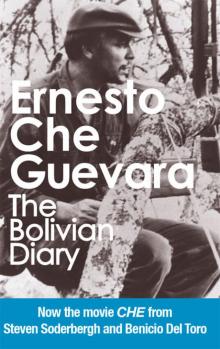 The Bolivian Diary
The Bolivian Diary Caffeine Blues_ Wake Up to the Hidden Dangers of America's #1 Drug ( PDFDrive )
Caffeine Blues_ Wake Up to the Hidden Dangers of America's #1 Drug ( PDFDrive )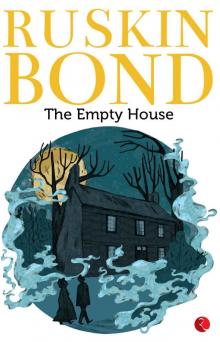 The Empty House
The Empty House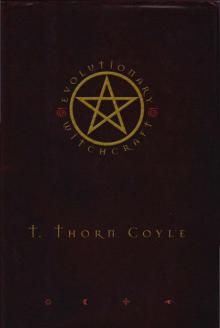 T Thorn Coyle Evolutionary Witchcraft (pdf)
T Thorn Coyle Evolutionary Witchcraft (pdf)![K J Emrick & Kathryn De Winter - [Moonlight Bay Psychic Mystery 01-06] - A Friend in; on the Rocks; Feature Presentation; Manor of; by Chocolate Cake; A-Maze-Ing Death (retail) (epub) Read online](http://freenovelread.comhttps://picture.efrem.net/img/nienyi/k_j_emrick_and_kathryn_de_winter_-_moonlight_bay_psychic_of_by_chocolate_cake_a-maze-ing_death_retail_epub_preview.jpg) K J Emrick & Kathryn De Winter - [Moonlight Bay Psychic Mystery 01-06] - A Friend in; on the Rocks; Feature Presentation; Manor of; by Chocolate Cake; A-Maze-Ing Death (retail) (epub)
K J Emrick & Kathryn De Winter - [Moonlight Bay Psychic Mystery 01-06] - A Friend in; on the Rocks; Feature Presentation; Manor of; by Chocolate Cake; A-Maze-Ing Death (retail) (epub)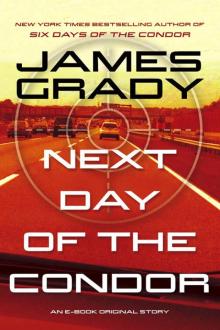 Next Day of the Condor
Next Day of the Condor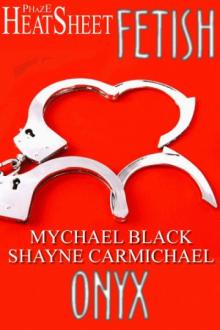 Onyx
Onyx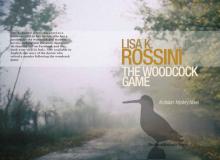 The Woodcock Game: An Italian Mystery Novel
The Woodcock Game: An Italian Mystery Novel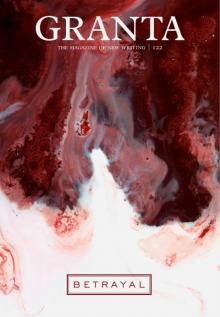 Granta 122: Betrayal (Granta: The Magazine of New Writing)
Granta 122: Betrayal (Granta: The Magazine of New Writing)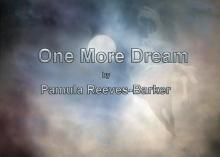 One More Dream
One More Dream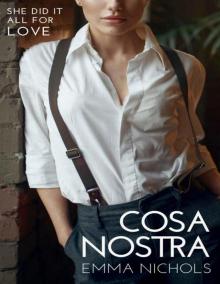 Cosa Nostra by Emma Nichols) 16656409 (z-lib.org) (1)-compressed
Cosa Nostra by Emma Nichols) 16656409 (z-lib.org) (1)-compressed Cowboy by J. M. Snyder
Cowboy by J. M. Snyder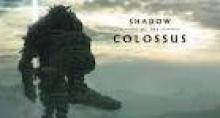 Colossus
Colossus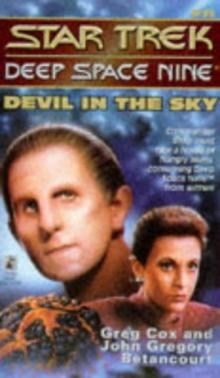 Star Trek - DS9 011 - Devil In The Sky
Star Trek - DS9 011 - Devil In The Sky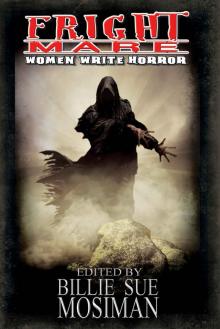 Fright Mare-Women Write Horror
Fright Mare-Women Write Horror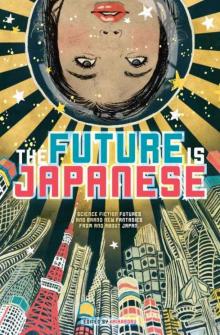 The Future Is Japanese
The Future Is Japanese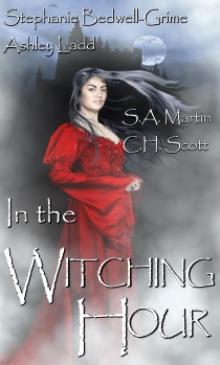 In the Witching Hour
In the Witching Hour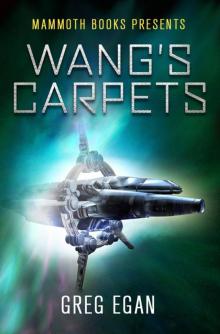 Mammoth Books presents Wang's Carpets
Mammoth Books presents Wang's Carpets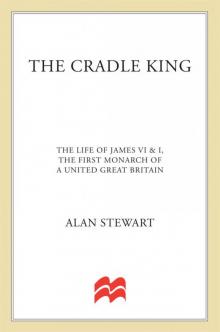 The Cradle King: The Life of James VI and I, the First Monarch of a United Great Britain
The Cradle King: The Life of James VI and I, the First Monarch of a United Great Britain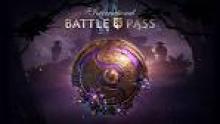 Stalking Moon
Stalking Moon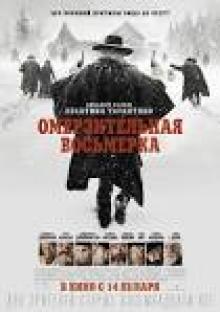 Hostage To The Devil
Hostage To The Devil![Harris, Daisy - Mere Passion [Ocean Shifters 2] (Siren Publishing Classic) Read online](http://i1.bookreadfree.com/i/03/23/harris_daisy_-_mere_passion_ocean_shifters_2_siren_publishing_classic_preview.jpg) Harris, Daisy - Mere Passion [Ocean Shifters 2] (Siren Publishing Classic)
Harris, Daisy - Mere Passion [Ocean Shifters 2] (Siren Publishing Classic)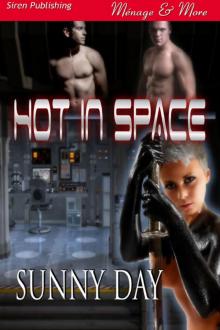 Day, Sunny - Hot in Space (Siren Publishing Ménage and More)
Day, Sunny - Hot in Space (Siren Publishing Ménage and More) Five Books Of The Lives, Heroic Deeds And Sayings Of Gargantua And His Son Pantagruel
Five Books Of The Lives, Heroic Deeds And Sayings Of Gargantua And His Son Pantagruel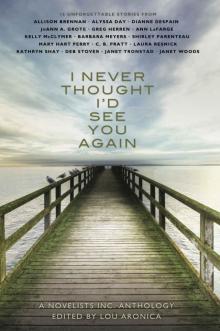 I Never Thought I'd See You Again: A Novelists Inc. Anthology
I Never Thought I'd See You Again: A Novelists Inc. Anthology Billion dollar baby bargain.txt
Billion dollar baby bargain.txt![Chenery, Marisa - Turquoise Eye of Horus [Egyptian Shifters 1] (Siren Publishing Classic) Read online](http://i1.bookreadfree.com/i1/03/26/chenery_marisa_-_turquoise_eye_of_horus_egyptian_shifters_1_siren_publishing_classic_preview.jpg) Chenery, Marisa - Turquoise Eye of Horus [Egyptian Shifters 1] (Siren Publishing Classic)
Chenery, Marisa - Turquoise Eye of Horus [Egyptian Shifters 1] (Siren Publishing Classic) Cat Magic
Cat Magic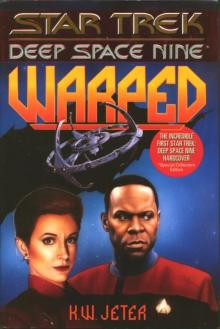 Star Trek - DS9 - Warped
Star Trek - DS9 - Warped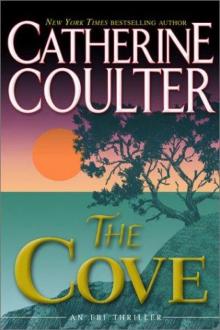 Catherine Coulter - FBI 1 The Cove
Catherine Coulter - FBI 1 The Cove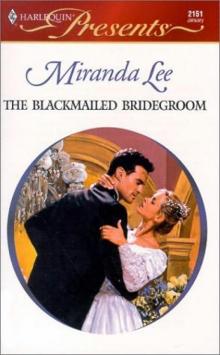 Miranda Lee -The Blackmailed Bridegroom
Miranda Lee -The Blackmailed Bridegroom The Seashell Anthology of Great Poetry
The Seashell Anthology of Great Poetry Dragon Moon
Dragon Moon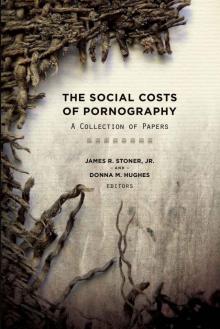 The Social Costs of Pornography: A Collection of Papers
The Social Costs of Pornography: A Collection of Papers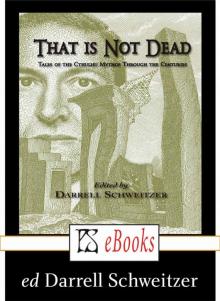 That Is Not Dead
That Is Not Dead Best New Horror: Volume 25 (Mammoth Book of Best New Horror)
Best New Horror: Volume 25 (Mammoth Book of Best New Horror) This Christmas by J. M. Snyder
This Christmas by J. M. Snyder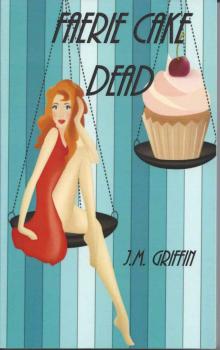 Faerie Cake Dead
Faerie Cake Dead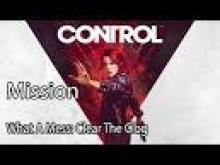 CS-Dante's Twins
CS-Dante's Twins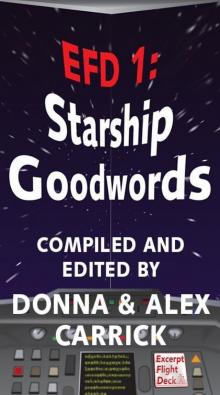 EFD1: Starship Goodwords (EFD Anthology Series from Carrick Publishing)
EFD1: Starship Goodwords (EFD Anthology Series from Carrick Publishing)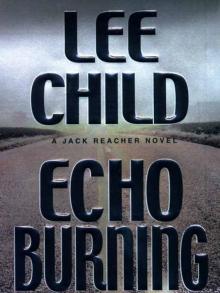 Echo Burning by Lee Child
Echo Burning by Lee Child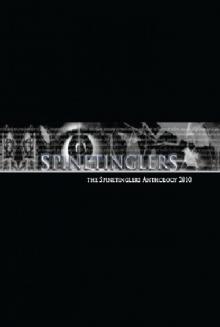 The Spinetinglers Anthology 2010
The Spinetinglers Anthology 2010 Wild Hearts
Wild Hearts Violet Winspear - Sinner ...
Violet Winspear - Sinner ...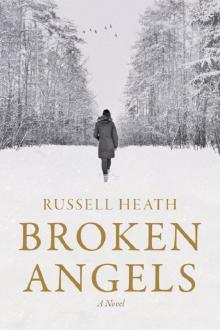 Broken Angels
Broken Angels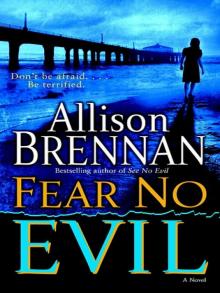 FearNoEvil
FearNoEvil![Santiago, Lara - Range War Bride [Tasty Treats 11] (Siren Publishing PolyAmour) Read online](http://i1.bookreadfree.com/i1/03/30/santiago_lara_-_range_war_bride_tasty_treats_11_siren_publishing_polyamour_preview.jpg) Santiago, Lara - Range War Bride [Tasty Treats 11] (Siren Publishing PolyAmour)
Santiago, Lara - Range War Bride [Tasty Treats 11] (Siren Publishing PolyAmour)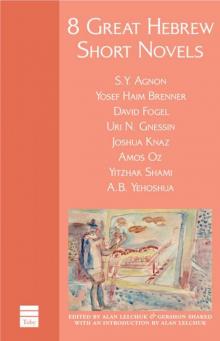 8 Great Hebrew Short Novels
8 Great Hebrew Short Novels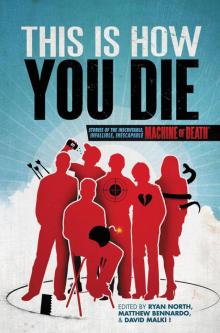 This Is How You Die: Stories of the Inscrutable, Infallible, Inescapable Machine of Death
This Is How You Die: Stories of the Inscrutable, Infallible, Inescapable Machine of Death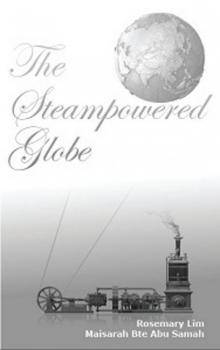 The Steampowered Globe
The Steampowered Globe While We Wait by J. M. Snyder
While We Wait by J. M. Snyder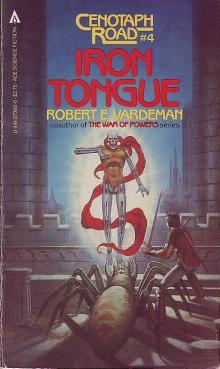 Iron Tongue cr-4
Iron Tongue cr-4![Stieg Larsson [Millennium 02] The Girl Who Played with Fire v5.0 (LIT) Read online](http://i1.bookreadfree.com/i1/03/31/stieg_larsson_millennium_02_the_girl_who_played_with_fire_v5_0_lit_preview.jpg) Stieg Larsson [Millennium 02] The Girl Who Played with Fire v5.0 (LIT)
Stieg Larsson [Millennium 02] The Girl Who Played with Fire v5.0 (LIT)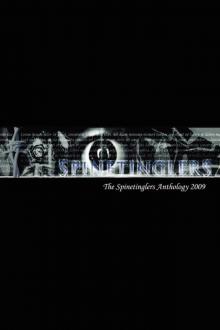 The Spinetinglers Anthology 2009
The Spinetinglers Anthology 2009 Bowles, Jan - Branded by the Texas Rancher (Siren Publishing Classic)
Bowles, Jan - Branded by the Texas Rancher (Siren Publishing Classic) Brown, Berengaria - Vivienne's Vacation (Siren Publishing Ménage and More)
Brown, Berengaria - Vivienne's Vacation (Siren Publishing Ménage and More) Inheritors
Inheritors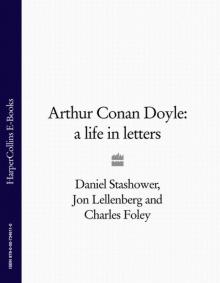 Arthur Conan Doyle: A Life in Letters
Arthur Conan Doyle: A Life in Letters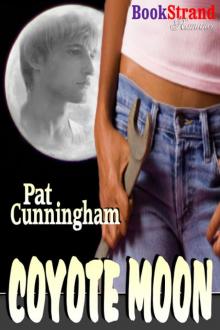 Cunningham, Pat - Coyote Moon (BookStrand Publishing Romance)
Cunningham, Pat - Coyote Moon (BookStrand Publishing Romance)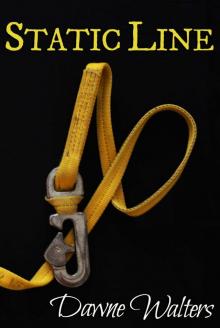 Static Line
Static Line Ghost Mysteries & Sassy Witches (Cozy Mystery Multi-Novel Anthology)
Ghost Mysteries & Sassy Witches (Cozy Mystery Multi-Novel Anthology) Elizabeth Neff Walker - Puppy Love
Elizabeth Neff Walker - Puppy Love Ghosts in the Machine
Ghosts in the Machine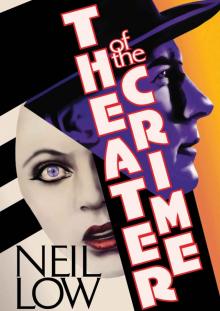 Theater of the Crime (Alan Stewart and Vera Deward Murder Mysteries Book 6)
Theater of the Crime (Alan Stewart and Vera Deward Murder Mysteries Book 6)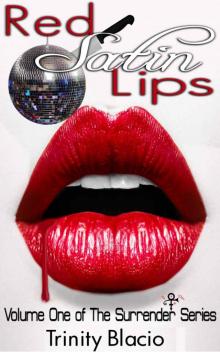 Red Satin Lips, Book One (The Surrender Series)
Red Satin Lips, Book One (The Surrender Series)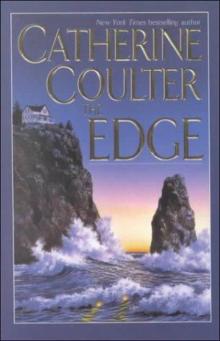 Catherine Coulter - FBI 4 The Edge
Catherine Coulter - FBI 4 The Edge StateoftheUnion
StateoftheUnion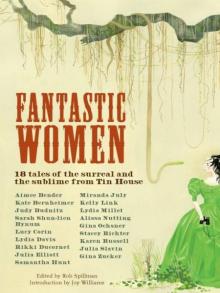 Fantastic Women: 18 Tales of the Surreal and the Sublime from Tin House
Fantastic Women: 18 Tales of the Surreal and the Sublime from Tin House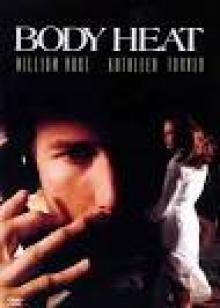 Sara Wood-Expectant Mistress original
Sara Wood-Expectant Mistress original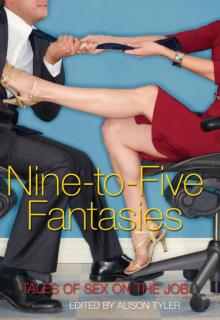 Nine-to-Five Fantasies: Tales of Sex on the Job
Nine-to-Five Fantasies: Tales of Sex on the Job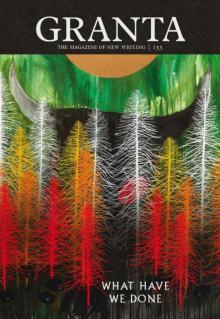 Granta 133
Granta 133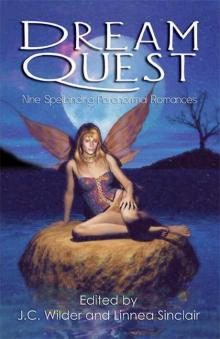 Dream Quest
Dream Quest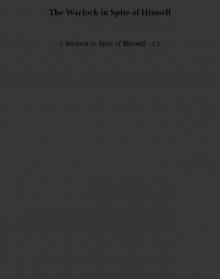 The Warlock in Spite of Himself wisoh-2
The Warlock in Spite of Himself wisoh-2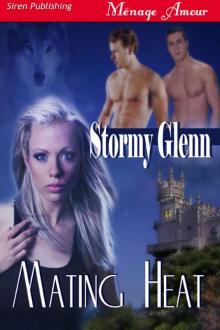 Glenn, Stormy - Mating Heat (Siren Publishing Ménage Amour)
Glenn, Stormy - Mating Heat (Siren Publishing Ménage Amour) Davis, Lexie - Toys from Santa (Siren Publishing Classic)
Davis, Lexie - Toys from Santa (Siren Publishing Classic) Once Dead, Twice Shy
Once Dead, Twice Shy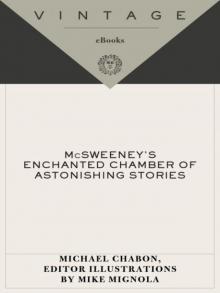 McSweeney's Enchanted Chamber of Astonishing Stories
McSweeney's Enchanted Chamber of Astonishing Stories Zombies: Shambling Through the Ages
Zombies: Shambling Through the Ages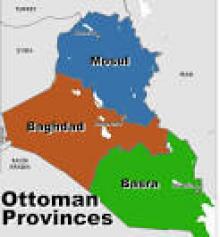 Baghdad Without a Map
Baghdad Without a Map Banshee Cries (the walker papers)
Banshee Cries (the walker papers)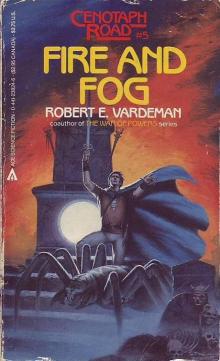 Fire and Fog cr-5
Fire and Fog cr-5 The Twelve Hot Days of Christmas
The Twelve Hot Days of Christmas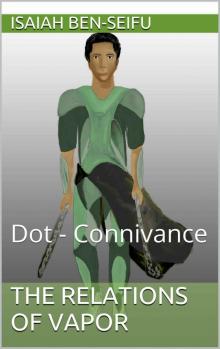 The Relations of Vapor: Dot - Connivance
The Relations of Vapor: Dot - Connivance![Harris, Daisy - Mere Temptation [Ocean Shifters 1] (Siren Publishing Classic) Read online](http://i1.bookreadfree.com/i2/04/11/harris_daisy_-_mere_temptation_ocean_shifters_1_siren_publishing_classic_preview.jpg) Harris, Daisy - Mere Temptation [Ocean Shifters 1] (Siren Publishing Classic)
Harris, Daisy - Mere Temptation [Ocean Shifters 1] (Siren Publishing Classic)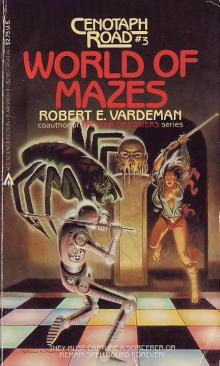 World of Mazes cr-3
World of Mazes cr-3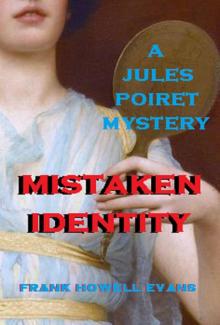 Mistaken Identity (A Jules Poiret Mystery Book 26)
Mistaken Identity (A Jules Poiret Mystery Book 26)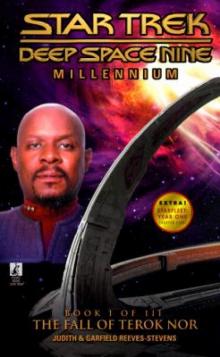 Star Trek - DS9 - Fall of Terok Nor
Star Trek - DS9 - Fall of Terok Nor Not Like I'm Jealous or Anything: The Jealousy Book (Ruby Oliver)
Not Like I'm Jealous or Anything: The Jealousy Book (Ruby Oliver) Skaterboy by J. M. Snyder
Skaterboy by J. M. Snyder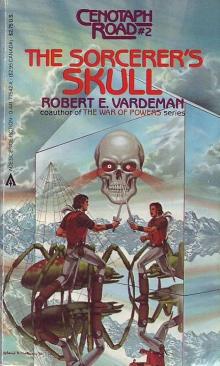 The Sorcerer_s Skull cr-2
The Sorcerer_s Skull cr-2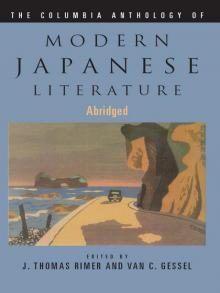 The Columbia Anthology of Modern Japanese Literature (Modern Asian Literature Series)
The Columbia Anthology of Modern Japanese Literature (Modern Asian Literature Series) New Erotica 5
New Erotica 5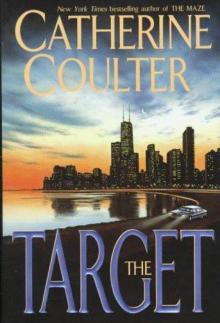 Catherine Coulter - FBI 3 The Target
Catherine Coulter - FBI 3 The Target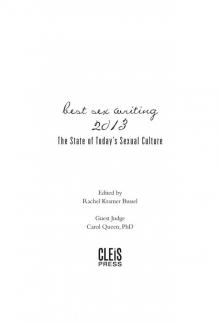 Best Sex Writing 2013: The State of Today's Sexual Culture
Best Sex Writing 2013: The State of Today's Sexual Culture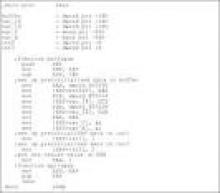 Factoring Humanity
Factoring Humanity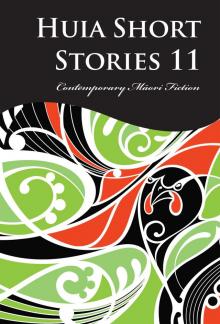 Huia Short Stories 11
Huia Short Stories 11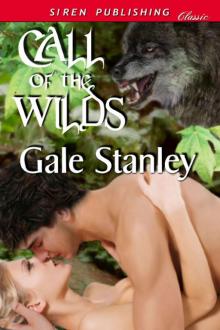 Call of the Wilds
Call of the Wilds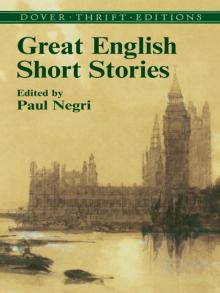 Great English Short Stories (Dover Thrift Editions)
Great English Short Stories (Dover Thrift Editions)![Ramagos, Tonya - Logan's Lessons [Sunset Cowboys 2] (Siren Publishing Classic) Read online](http://i1.bookreadfree.com/i2/04/10/ramagos_tonya_-_logans_lessons_sunset_cowboys_2_siren_publishing_classic_preview.jpg) Ramagos, Tonya - Logan's Lessons [Sunset Cowboys 2] (Siren Publishing Classic)
Ramagos, Tonya - Logan's Lessons [Sunset Cowboys 2] (Siren Publishing Classic)![Morgan, Nicole - Sweet Redemption [Sweet Awakenings 1] (Siren Publishing Allure) Read online](http://i1.bookreadfree.com/i2/04/10/morgan_nicole_-_sweet_redemption_sweet_awakenings_1_siren_publishing_allure_preview.jpg) Morgan, Nicole - Sweet Redemption [Sweet Awakenings 1] (Siren Publishing Allure)
Morgan, Nicole - Sweet Redemption [Sweet Awakenings 1] (Siren Publishing Allure)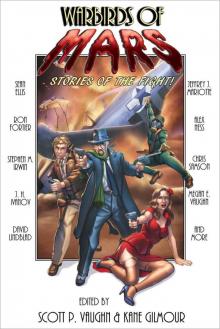 Warbirds of Mars: Stories of the Fight!
Warbirds of Mars: Stories of the Fight!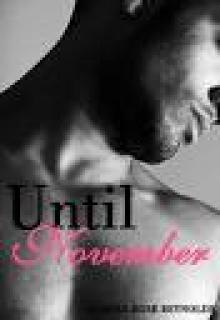 Original Version of Edited Godwin Stories(lit)
Original Version of Edited Godwin Stories(lit) Where The Hell is Boulevard?
Where The Hell is Boulevard?![Chemical [se]X Read online](http://i1.bookreadfree.com/i2/04/13/chemical_sex_preview.jpg) Chemical [se]X
Chemical [se]X Allison Brennan - See No Evil
Allison Brennan - See No Evil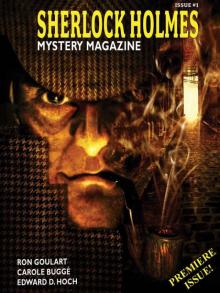 Sherlock Holmes Mystery Magazine #1
Sherlock Holmes Mystery Magazine #1